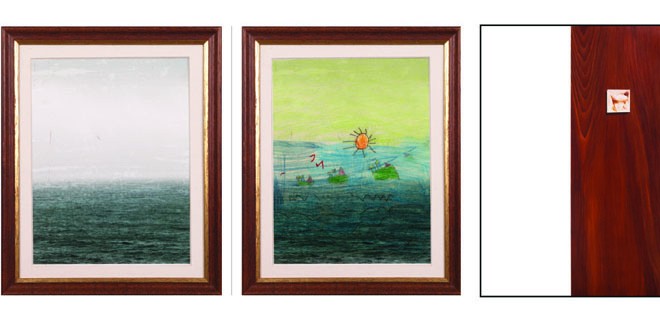

Art schools add this unique phase to an artist’s career when he is exposed to individuals who not only differ from his creative practice but possess opposing concepts of art. He learns to survive with opposing opinions and, often, thrives on the presence of diverse interpretations of art which may enrich and develop his own aesthetic pursuits.
In a way, artists’ residencies seek to provide the same experience by inviting artists to spend a specific period with each other and work.
In a milieu where there is no state support for unconventional work and one is tied up with the web of galleries and buyers, the idea of a parallel system to nurture art activities is important. Thus a number of artists residency programme have been established in Pakistan, Sanat Residency being a recent addition to the list. Initiated by Abid Merchant and curated by Muhammad Zeeshan, the first edition of this residency included seven artists, all young graduates from different art schools of this country. These artists stayed for a month in Karachi, interacted with each other, exchanged ideas; and what came out is on view June 27 to July 24, 2014 at the newly established Sanat Gallery in Karachi.
Ranging from small and intimate paintings on flat surfaces, to site-specific installations, interactive works, mixed media and text pieces, all of these portray the new face of contemporary art of Pakistan.
The seven artists who lived at one location and discussed each other’s creative plans and helped in fabricating them have surprisingly produced completely distinct art pieces. The existence of others serves the purpose of enhancing not the creative ability but the critical faculty. So an artist can reflect on his creation through his own eyes and through the eyes and comments of others around him.
The exhibition ‘Incubator’ indicates this merging of creative and critical approaches, besides illustrating how the experience of residency has diverse effects on the participants.
Zahra Asim has shown a series of small paintings comprising views of interiors which are devoid of any living beings. Yet the arrangement of objects and sense of intimacy is such that these settings convey a human content. Abid Aslam has displayed a total of 40 portraits rendered in pencil. These are the faces of famous personalities, but all are made in tiny scale inside custom-made eyelets. Both the concept of making series of portraits of famous artists, politicians and others, and the decision of producing these in small scale remind one of the work of Ayaz Jokhio. Jokhio created a series of famous personalities’ portraits in newspaper collages and, in another exhibition, displayed paintings in tiny scale.
Rohail Ghouri’s work combines various approaches and styles of art making; hence the tools of drawing, pattern-making and flat surfaces are blended to compose scenes of urban sites. Probably the formal construction of these works has a parallel in our urban reality, which comprises multiple religious, racial and economic groups living side by side even if not harmony.
The political condition of the country is addressed, in an oblique manner, in the work of Sajid Khan demonstrating his command in pencil to create subtle tones and shades. The control on a medium is evident in the work of another artist, Ghulam Mohammad, who has been cutting letters from printed papers and joining these in different formations. In the present exhibition, too, the words overlap and make elementary shapes or serve as the backdrop to white text. The density of these small letters invites a viewer to ponder on the role, relation and relevance of language.
Two other artists’ works offer an element of surprise to the visitors. In Arslan Nasir’s three dimensional pieces the surprise is of a dramatic nature: a person has to move or touch the work placed on pedestal in order to see the inner image lit with human touch. But it is Kiran Saleem who impresses the spectators with her conceptual twist into reality. It is not unusual to see two feet almost life-like underneath the wall, cabinet shelves stuck on a section of gallery and a wooden panel with portrait of person hanging on it. But the sense of oddity starts on a closer look when the viewer realises that the feet are fabricated, shelves are just flat painted surfaces, and wooden panel with portrait is merely another painted but flat piece. The trespassing from real to virtual and vice versa turns her work into an unforgettable conceptual exercise.
The Sanat Residency, made possible with the support of Abid Merchant and Muhammad Zeeshan, affirms that contemporary art can not be confined to a category nor is it catered for the market. It is best placed to critique boundaries of all kinds including the solitude of studio and the crowded space of gallery.